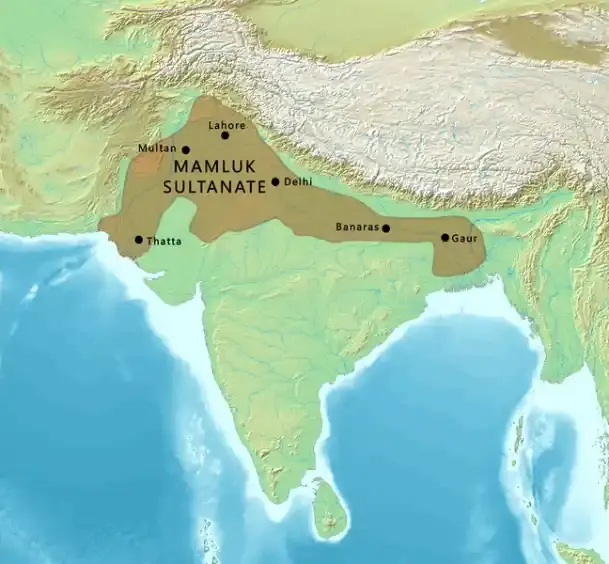The Mamluks in the Arab World: History - Importance - Leaders and Decline
The Mamluk Sultanate was a state that ruled Egypt, the Levant and the Hejaz from the mid-thirteenth to the early sixteenth century. The sultanate was founded with the overthrow of the Ayyubid dynasty in Egypt in 1250 and conquered by the Ottoman Empire in 1517. In this article, we talk about this state, its rise and decline.
Show key points
- The Mamluk Sultanate, founded in 1250 after overthrowing the Ayyubid dynasty, ruled Egypt, the Levant, and the Hejaz until its conquest by the Ottoman Empire in 151
- Originating as slave soldiers during the Abbasid period, Mamluks rose to power by seizing political control while maintaining a symbolic caliphate.
- The Mamluk period is divided into the Turkic and Circassian eras, reflecting shifts in leadership ethnicity and related state transformations from 1250 to 151
- ADVERTISEMENT
- Their military achievements included defeating the Mongols and Crusaders, reviving the caliphate, and securing religious legitimacy through patronage of Mecca and Medina.
- Economic and political instability, including reliance on ethnicity over merit and recurring epidemics, led to the eventual decline and vulnerability of the Mamluk state.
- Despite their downfall, the Mamluks maintained influence under Ottoman rule, regaining significant power until their final defeat by Muhammad Ali Pasha in 181
- Culturally, the Mamluks enriched Islamic architecture and historical writing, leaving enduring monuments in cities like Cairo, Damascus, and Jerusalem.
Name:

The Mamluk is the slave soldier, a member of one of the slave armies established during the Abbasid era, where the use of the Mamluks as a major component of Islamic armies became a distinctive feature of Islamic civilization. The practice began in Baghdad by the Abbasid caliph al-Mu'tasim and soon spread throughout the Islamic world. The political result was that slaves exploited their military power to control legitimate political power, often only briefly, but sometimes for very long periods. Thus, shortly after Mu'tasim's rule, the caliphate itself fell victim to the Turkish Mamluk generals, who were able to depose or kill the caliphs. Although they maintained the caliphate as a symbol of legitimate authority, actual power was in their hands. By the thirteenth century, the Mamluks had succeeded in establishing their own dynasties, both in Egypt and in India, where the sultans were necessarily of slave origin or heirs of these men.
Recommend
History of the Mamluk dynasty:
Saladin took control of Egypt in 1169, and followed what was a tradition of Islamic military practice by including a slave corps into his army, as well as Kurdish, Arab, Turkmen and other elements. His successors followed this practice as well; the righteous king Ayyub (1240-1249) was the largest buyer of slaves, especially the Turks, as a means of protecting his sultanate from rivals within the Ayyubid family itself, and from the Crusaders. Upon his death in 1249, a struggle arose over his throne, in the course of which Mamluk leaders killed his heir and eventually succeeded in installing one of them as sultan. Since then, for more than 250 years, the Mamluks or Mamluks have ruled Egypt and Syria.
Historians have traditionally divided the Mamluk era into two periods—one covering the period from 1250 to 1382, and the other from 1382 to 1517. Modern Muslim historians have referred to these periods as the Turkic and Circassian periods in order to draw attention to the change in the ethnic origin of the majority of the Mamluks, which occurred and continued after Barquq came to power in 1382, and the effects this change had on the wealth of the state.
The main achievement of the Turkish Mamluks was their expulsion of the remaining crusaders from the Levant and the defeat of the Mongols in Palestine and Syria; they thus won the thanks of all Muslims for saving the Arab-Islamic civilization from destruction. The Mamluks also sought to extend their power to the Arabian Peninsula and to Anatolia and Little Armenia; to protect Egypt, they sought to establish their presence in Nubia.
To strengthen their position in the Muslim world, the Mamluks revived the caliphate destroyed by the Mongols in 1258. Their patronage of the rulers of the holy cities of the Arabian Peninsula, Mecca and Medina, served the same purpose. Their incredible success in war and diplomacy was established economically by their support for industries and handicrafts, as well as by the restoration of Egypt as a major trade and transit route between the East and the Mediterranean.
The most prominent sultans:

Among the most prominent Mamluk sultans were Baibars I (1260-1277) and King Al-Nasir (1293-1341). The failure of the Mamluks to find a capable successor after the latter's death weakened the strength and stability of their kingdom. But historians of this era trace the beginning of the decline of the dynasty to the accession of the first Circassian sultan (plum) to power in 1382, arguing that progress in the state and the army then depended on ethnicity (i.e., Circassian origin) rather than on proven skill in the art of war, which served as the main criterion for promotion during the Turkish period. However, the increasing importance given to ethnicity was only one reason for the decline; economic and other factors were equally important, or even more important. Part of the explanation undoubtedly lies in the inability of the Mamluks to provide the necessary guarantees to ensure the peaceful conduct of trade and agriculture. Moreover, demographic losses caused by epidemics in Egypt and elsewhere in the east have contributed to economic decline. Under these conditions the Mamluks were unable to defend Syria against Tamerlane in 1400.
Under Sultan Barsbay (1422–1438), internal stability was briefly restored, and the glory of the Mamluks came to life with the conquest of Cyprus in 1426. But the increased taxes required to finance such projects exacerbated the financial difficulties faced by the Mamluks. The final economic blow was the Portuguese attack on trade in the Red Sea (circa 1500), which was accompanied by Ottoman expansion into Mamluk territory in Syria. After their decisive defeat by the Ottomans in Syria and Egypt in 1516 and 1517, the Mamluks are only one of the many components of Egypt's political structure.
Cultural achievements:

Culturally, the Mamluk period is mainly known for its achievements in historical writing and architecture. Mamluk historians were prolific in writing history, biographies and encyclopedias; generally they were not remarkably creative, with the exception of Ibn Khaldun, who spent his formative years outside the Mamluk lands of Morocco. As builders of religious buildings, mosques, schools, and tombs, the Mamluks endowed Cairo with some of its most impressive monuments, many of which still stand today. The tombs of Mamluk mosques can be identified by stone domes whose magnitude is balanced with geometric inscriptions. The Mamluks also left immortal relics in Damascus, Aleppo, Jerusalem, Tripoli and many other cities.
Mamluks during the Ottoman era (1517 - 1798):
Despite the destruction of their sultanate, the Mamluks remained as a class in Egypt and continued to exert considerable influence in the state. As during the Mamluk dynasty, the elite Mamluks continued to refuel through purchases from slave markets. After a period of training, slaves formed the core of the army and were soon appointed to positions in the Ottoman government. Thus, the Mamluks gradually infiltrated the Ottoman ruling class, eventually gaining control of it.
Towards the end of the seventeenth century, Ottoman power began to decline throughout the empire, and the Mamluks regained effective control of the army, revenues, and government. Eventually, Istanbul was forced to recognize the independence of the faction of Mamluks who guaranteed certain sums of money annually to the Ottomans. Napoleon thus confronted the Mamluk armies and the Mamluk state when he invaded Egypt in 1798. Egypt's new ruler, Muhammad Ali Pasha, eventually destroyed their power there in the 1811 massacre.
![]()
A book that may interest you: pistachio theory
A book that might interest you - Pistachio Theory more- ADVERTISEMENT
![]()
The most important technical terms that everyone should know
Knowing technical terms isn’t always necessary—but if you want to dive deeper into tech or work in the field, it’s essential. Technologies like AI, IoT, VR, and 3D printing are transforming daily life, industry, and healthcare, bringing both exciting possibilities and challenges like privacy and security. more- ADVERTISEMENT
![]()
Human population growth: where are we now?
As the global population heads toward 10.5 billion by 2100, challenges like aging populations, food security, and environmental strain grow. While prosperity helps lower fertility, it also increases environmental harm. Addressing climate change, boosting food production sustainably, and shifting to low-carbon energy are key to balancing growth and the planet’s health. more- ADVERTISEMENT
![]()
Time Management Skills: Effective Methods to Increase Productivity
Time isn’t just ticking—it’s the most valuable thing we have. Managing it right means less stress, more focus, and better balance between work and life. With simple techniques like prioritizing tasks or using the Pomodoro method, we can work smarter, not harder, and truly make every moment count. more- ADVERTISEMENT
![]()
A good leader knows he doesn't know everything: lessons my old sergeant didn't learn
Great leaders don’t pretend to know it all—they lead with humility, collaboration, and a willingness to learn. In today’s fast-changing world, success comes from empowering teams, embracing change, and valuing diverse perspectives, not clinging to outdated notions of authority. more- ADVERTISEMENT
![]()
Historic Nizwa Fort... The splendor of construction since the seventeenth century AD
Nizwa, once Oman's capital, is famed for its mighty fort, rich history, and stunning mountain views. Its iconic circular tower, ancient defenses, and vibrant museum make it a top spot for visitors seeking a real taste of Omani heritage and breathtaking panoramas. more- ADVERTISEMENT
![]()
The Science Behind the Fireworks: Detecting Magic in the Sky
Fireworks light up the sky with magic, but behind the scenes, it’s all science—from chemistry creating dazzling colors to physics shaping every explosion. With modern tech, they’re safer and even eco-friendlier, blending beauty and brains for unforgettable shows that wow us while caring for the planet. more- ADVERTISEMENT
![]()
A book that may interest you: 52 practical rules for success
A book that might interest you - Fifty-Two Rules of Thumb for Success Without Losing Yourself more- ADVERTISEMENT
![]()
The city of Rimini on the Adriatic coast with its Roman history
Rimini blends beachside charm with rich history—from ancient Roman arches to Renaissance castles. Wander through art-filled streets, savor local pasta and fish soups, and explore unique spots like the Jampalonga Library or Fellini's first home. By the sea or in town, Rimini never stops giving. more- ADVERTISEMENT
![]()
LI-FI: where the Internet travels at the speed of light
LI-FI, created in 2011 by Prof. Harald Haas in Scotland, uses light instead of radio waves for data transfer. It offers ultra-fast speed and strong security, making it ideal for sensitive environments. Despite its promise, challenges like high costs and dependency on constant lighting limit its widespread use. more- ADVERTISEMENT





















